Executive Coaching What Is It: Guide for Leaders 2025
What if you could unlock your highest leadership potential and drive extraordinary results in 2025’s fast-changing business landscape? As the world of work transforms rapidly, more leaders are asking the critical question: executive coaching what is it and how can it help me thrive?
This guide breaks down the essentials, showing how executive coaching empowers leaders to adapt, grow, and succeed. You’ll discover what executive coaching is, its benefits, different types, the coaching process, how to choose the right coach, and inspiring real-world examples.
Ready to see how executive coaching can shape your future? Let’s dive in and explore what’s possible.
What Is Executive Coaching?
Unlocking leadership potential and driving real change often begins with a simple question: executive coaching what is it? Executive coaching is a tailored, one-on-one professional development process designed for leaders and high-potential employees. Unlike generic training programs, it’s highly individualized, focusing on the unique needs, goals, and challenges of each client.
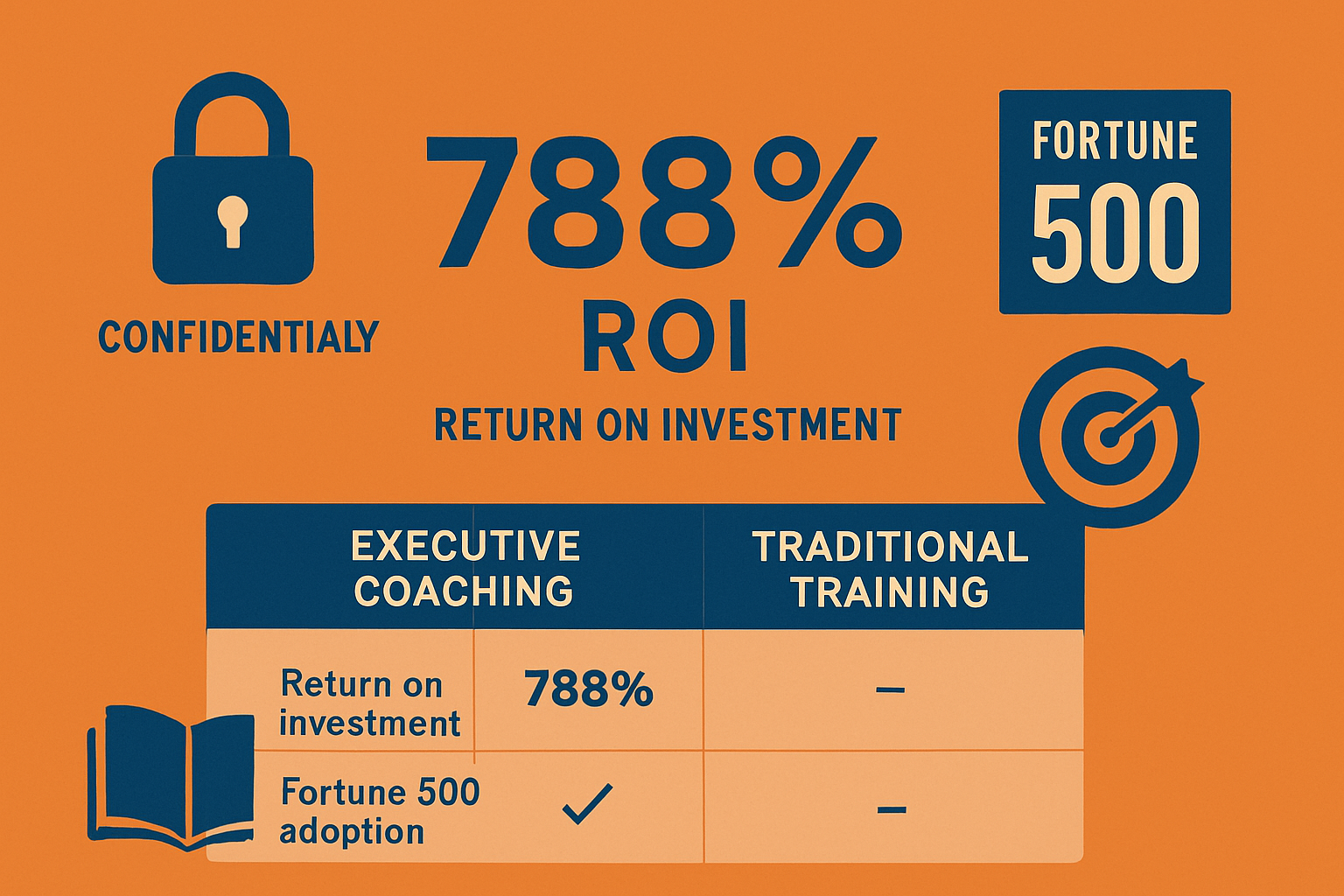
Defining Executive Coaching
At its core, executive coaching is a confidential partnership between a coach and a leader. The process centers on goal-setting, accountability, and personalized feedback. Sessions are ongoing, allowing for continuous growth, reflection, and adjustment.
Key components of executive coaching include:
- Confidentiality: Safe space for honest reflection.
- Goal-setting: Clear, measurable objectives aligned with business needs.
- Accountability: Regular check-ins to ensure progress.
- Personalized feedback: Tailored advice and insights.
How does executive coaching what is it differ from traditional training? While training is often one-size-fits-all and event-based, coaching is interactive, ongoing, and deeply personalized. It adapts to the evolving needs of the leader rather than following a fixed curriculum.
What was once a privilege of the C-suite is now available to leaders at many levels. Today, Fortune 500 companies regularly use executive coaching to accelerate leadership development and drive business results. According to a Metrix Global study, executive coaching delivers a remarkable 788% return on investment—a figure supported by recent executive coaching boosts performance statistics.
Executive coaching what is it isn’t just about fixing problems. It’s a strategic investment that proactively builds leadership capacity and resilience, giving organizations a competitive edge.
The Role of the Executive Coach
Executive coaching what is it also depends on the person delivering the experience: the executive coach. Coaches may be external, bringing independence and objectivity, or internal, embedded within the organization. External coaches often offer greater confidentiality and an unbiased perspective.
Credentialing matters. Certified coaches, especially those accredited by organizations like the International Coaching Federation, follow strict ethical standards. This ensures trust and professionalism throughout the engagement.
Executive coaches focus on critical leadership areas such as:
- Strategic thinking: Seeing the big picture.
- Emotional intelligence: Navigating complex relationships.
- Decision-making: Making confident, informed choices.
- Influence: Inspiring and motivating others.
Rather than giving direct answers, a coach acts as a facilitator. They help clients unlock their own potential, challenge limiting assumptions, and explore innovative strategies. For example, an executive who struggled with delegation worked with a coach to uncover blind spots, ultimately transforming their leadership style and team effectiveness.
In summary, executive coaching what is it is a powerful, future-focused partnership that catalyzes growth for leaders and organizations alike.
Executive Coaching vs. Other Leadership Development Approaches
Leaders often ask: executive coaching what is it, and how does it differ from other development approaches? Understanding these distinctions helps you choose the right support for your growth. Below, we break down the main types of coaching and clarify what executive coaching is—and isn’t.
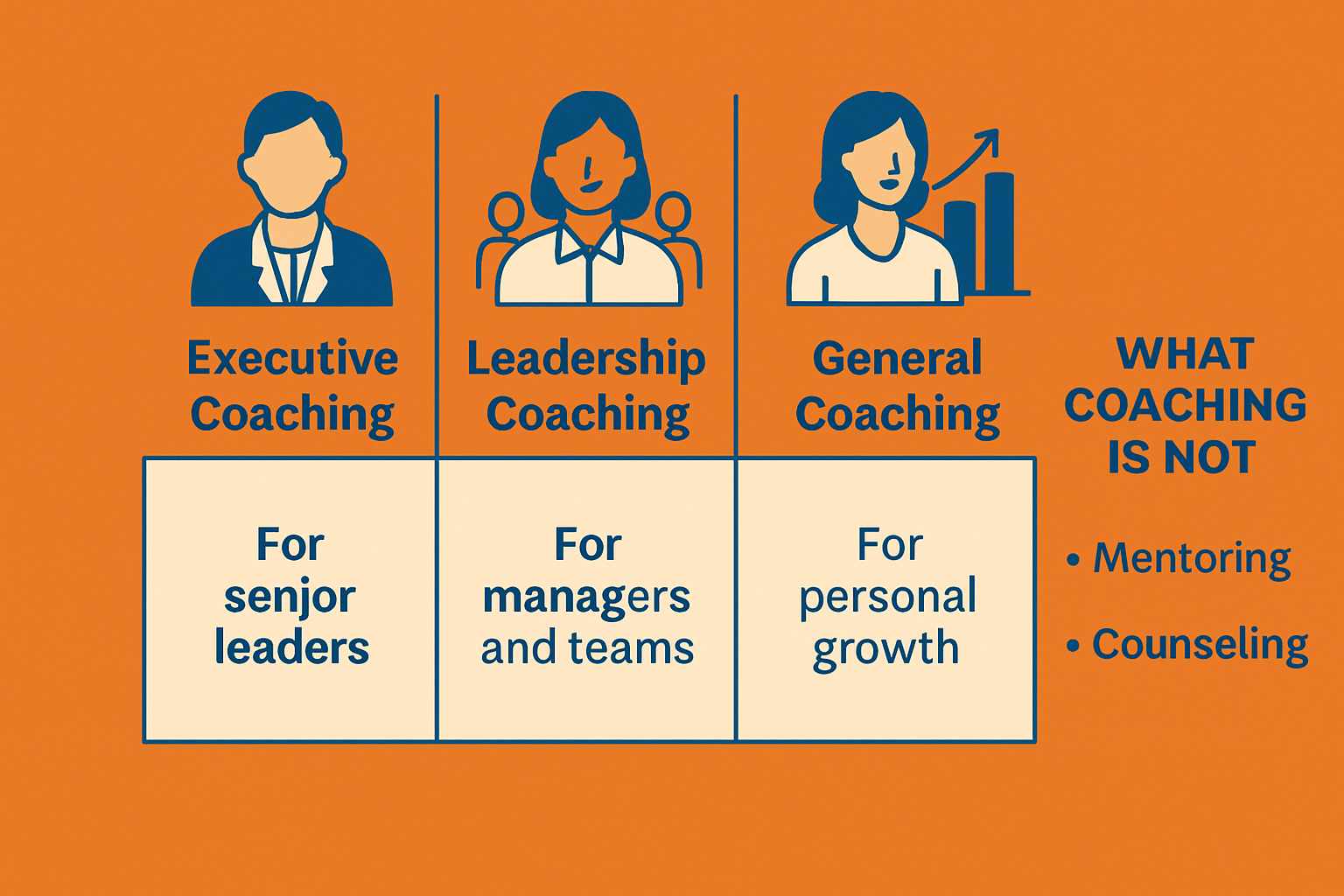
Executive Coaching vs. Leadership Coaching vs. General Coaching
When considering executive coaching what is it, it's helpful to compare it with other coaching styles. Executive coaching is tailored for senior leaders and focuses on strategic thinking, influence, and organizational impact. Leadership coaching, in contrast, is designed for managers or aspiring leaders, emphasizing team building and communication. General coaching casts a wider net, helping individuals with personal or professional growth, not limited to leadership roles.
| Coaching Type | Who It’s For | Focus Areas | Typical Goals |
|---|---|---|---|
| Executive Coaching | Senior leaders, execs | Strategy, influence, vision | Organizational impact, ROI |
| Leadership Coaching | Managers, new leaders | Teamwork, communication | Improved people management |
| General Coaching | Any professional | Personal/professional growth | Work-life balance, motivation |
Organizations should choose executive coaching when the stakes are high, such as preparing for succession, driving transformation, or developing C-level talent. If you want a deeper dive into how executive, leadership, and life coaching differ, check out this helpful guide: Life coaching versus executive coaching.
Matching the coaching style to your needs maximizes results. Executive coaching what is it, after all, is a strategic investment for leaders who want to make a measurable impact.
What Executive Coaching Is NOT
It’s easy to confuse executive coaching with mentoring or counseling, but they serve different purposes. Executive coaching what is it? It’s not about giving advice or resolving past issues. Instead, coaching is a non-directive, goal-focused partnership.
Key distinctions:
- Mentoring: The mentor shares wisdom from personal experience and offers guidance. Coaching, on the other hand, centers on asking questions to unlock your potential.
- Counseling: Counseling helps you process past challenges and emotional well-being. Executive coaching is future-oriented and performance-driven.
For example, when a leader seeks coaching expecting therapy, both sides may feel frustrated by misaligned expectations. Clear boundaries help ensure coaching is used effectively.
Remember, understanding executive coaching what is it—and what it is not—helps leaders gain the full benefit, driving real change and avoiding common pitfalls.
Types and Models of Executive Coaching
The landscape of executive coaching what is it is far from one-size-fits-all. Today’s leaders have access to a diverse range of coaching types and models, each designed to support unique challenges and goals. Understanding these options is the first step toward unlocking your leadership potential and finding the right fit for your journey.
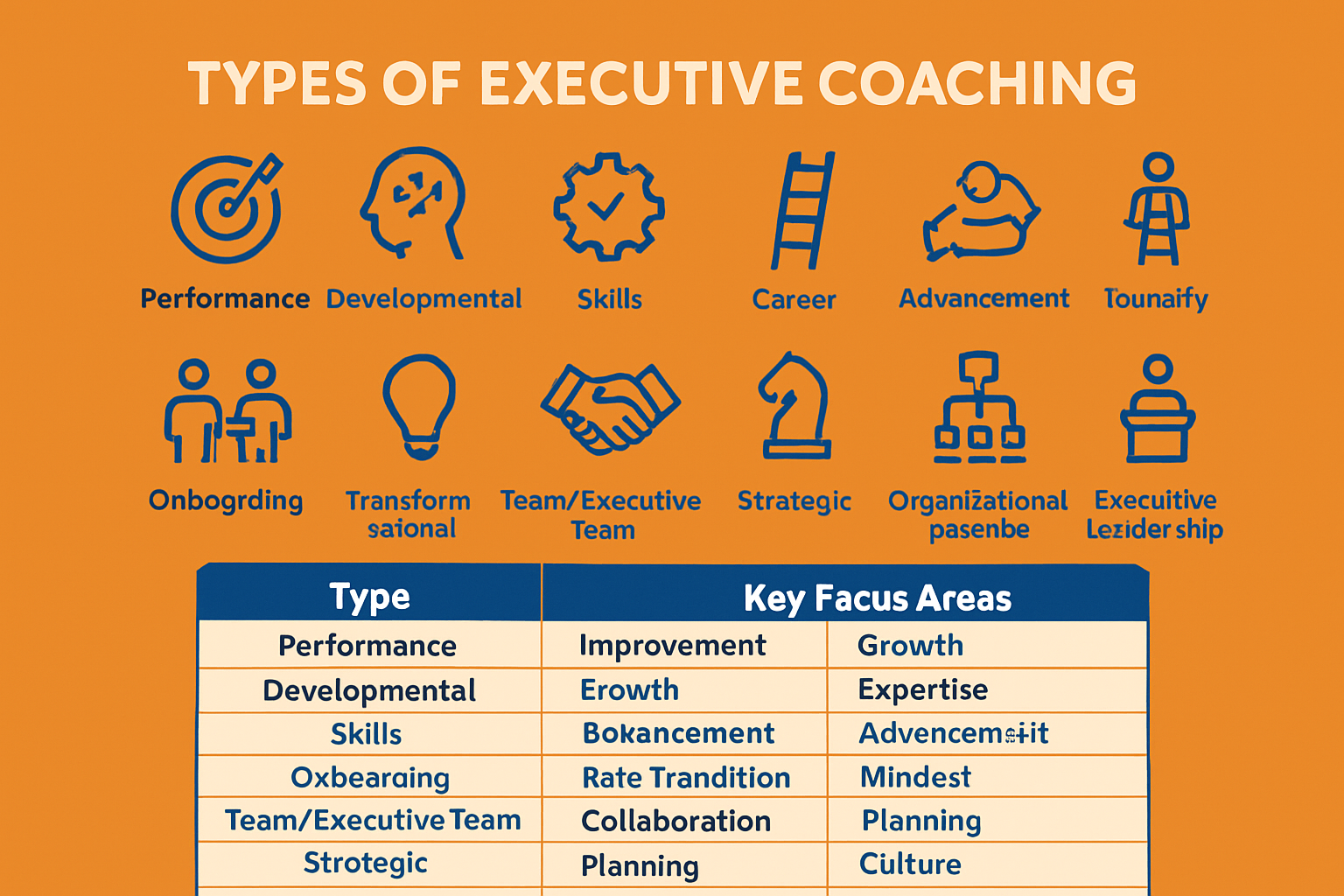
Overview of Coaching Types
Executive coaching what is it encompasses a spectrum of approaches, each tailored for specific leadership needs. Let’s break down the most common types:
| Coaching Type | Primary Focus |
|---|---|
| Performance Coaching | Targeting improved results and effectiveness |
| Developmental Coaching | Building capacity for complexity and change |
| Skills Coaching | Honing skills like public speaking or time mgmt |
| Career Coaching | Navigating transitions and promotions |
| Onboarding Coaching | Supporting leaders stepping into new roles |
| Transformational Coaching | Shifting beliefs and mindsets for deep change |
| Team/Executive Team Coaching | Enhancing group collaboration and results |
| Strategic Coaching | Long-term vision and planning |
| Organizational/Business Coaching | Aligning leaders with company goals |
| Management Coaching | Developing core management competencies |
| Executive Leadership Coaching | Readying leaders for top roles |
Performance coaching, for example, zeroes in on concrete outcomes and accountability, while developmental coaching takes a broader view, helping leaders adapt to change and complexity. Skills coaching is ideal for sharpening specific abilities, and career coaching is a go-to for those eyeing a promotion or change.
Onboarding coaching eases transitions for leaders stepping into new roles. Transformational coaching goes deeper, addressing mindset and beliefs at the core. For teams, executive team coaching can dramatically boost collaboration and performance.
It’s also worth noting the distinction between executive coaching and business coaching. While they overlap, business coaching often focuses on organizational strategy and systems. For a deeper dive into this difference, see Business coaching explained.
Each model has its place, and many organizations blend several to meet evolving leadership needs.
How to Identify the Right Coaching Model
Choosing the right model within executive coaching what is it starts with a clear-eyed assessment of your goals and context. Are you aiming for a specific result, such as improved team performance? Or seeking to develop broader leadership capacity for future challenges?
Begin by evaluating both organizational and individual needs. For example, a fast-growing tech startup might use team coaching to scale leadership across new managers, while a senior executive preparing for succession could benefit from transformational and strategic coaching.
Leaders often require different coaching types at various career stages. Early on, skills and performance coaching may be most beneficial. As responsibilities increase, developmental and strategic coaching become crucial. In fact, about one-third of Fortune 500 companies use external executive coaches for standard leadership development, underscoring the value of diverse coaching models.
Ask yourself:
- What are my current leadership challenges?
- Is my need focused (like public speaking) or broad (like leading through change)?
- Am I seeking individual growth, or do we need to elevate a whole team?
Remember, executive coaching what is it is not a static answer. The best approach adapts to your evolving leadership journey, combining different models as your role and organization grow.
The Executive Coaching Process: Step-by-Step Guide
Embarking on executive coaching can feel like charting a new course in your leadership journey. Understanding executive coaching what is it begins with a clear process designed to unlock your potential, foster accountability, and deliver measurable results. Let’s break down each step so you know what to expect and how to make the most of this transformative experience.
Step 1: Identifying the Need for Coaching
The journey starts by recognizing when executive coaching what is it can be most valuable. Typical triggers include stepping into a new leadership role, hitting a performance plateau, navigating organizational change, or preparing for succession.
Leaders often begin with self-assessment tools or 360-degree feedback to pinpoint strengths and growth areas. For example, after a major merger, an executive may notice new challenges in stakeholder management. This realization signals that targeted support could help bridge the gap between current and desired performance.
Common signs you might benefit from coaching:
- Facing complex decisions or increased responsibilities
- Struggling to inspire or align your team
- Preparing for a significant transition
By identifying these triggers, you ensure your coaching journey starts with purpose and clarity.
Step 2: Setting Goals and Expectations
Once you’ve recognized the need, the next step in executive coaching what is it is to set clear, measurable goals. This stage is collaborative—both you and your coach work together to define objectives that align with your business priorities and personal aspirations.
For instance, you might set a goal to improve cross-functional team leadership or enhance your strategic decision-making. Your coach will help refine these goals so they are specific, achievable, and linked to tangible outcomes.
During this phase, you’ll also discuss expectations for confidentiality, session frequency, and communication. Having a shared understanding ensures a productive, trusting partnership.
A well-defined roadmap keeps you focused and motivated, making progress easier to track and celebrate.
Step 3: Selecting the Right Executive Coach
Choosing the right coach is critical to success in executive coaching what is it. Start by evaluating credentials—look for certifications from reputable organizations like the International Coach Federation (ICF) and a proven track record in your industry.
Chemistry matters just as much as expertise. Many leaders interview multiple coaches to find someone whose style, methodology, and values align with their own. For example, a manufacturing CEO might compare coaches with different backgrounds to find the best fit for their leadership context.
Key criteria to consider:
- Relevant experience and industry knowledge
- Coaching approach and personality
- Commitment to confidentiality and ethical standards
Investing time in this step builds a foundation of trust and openness.
Find an Executive Coach with Noomii
Finding the perfect match is easier with resources like Noomii, the web’s largest directory of professional coaches. Their SmartMatch™ algorithm connects leaders to vetted executive coaches worldwide, ensuring you find someone aligned with your needs.
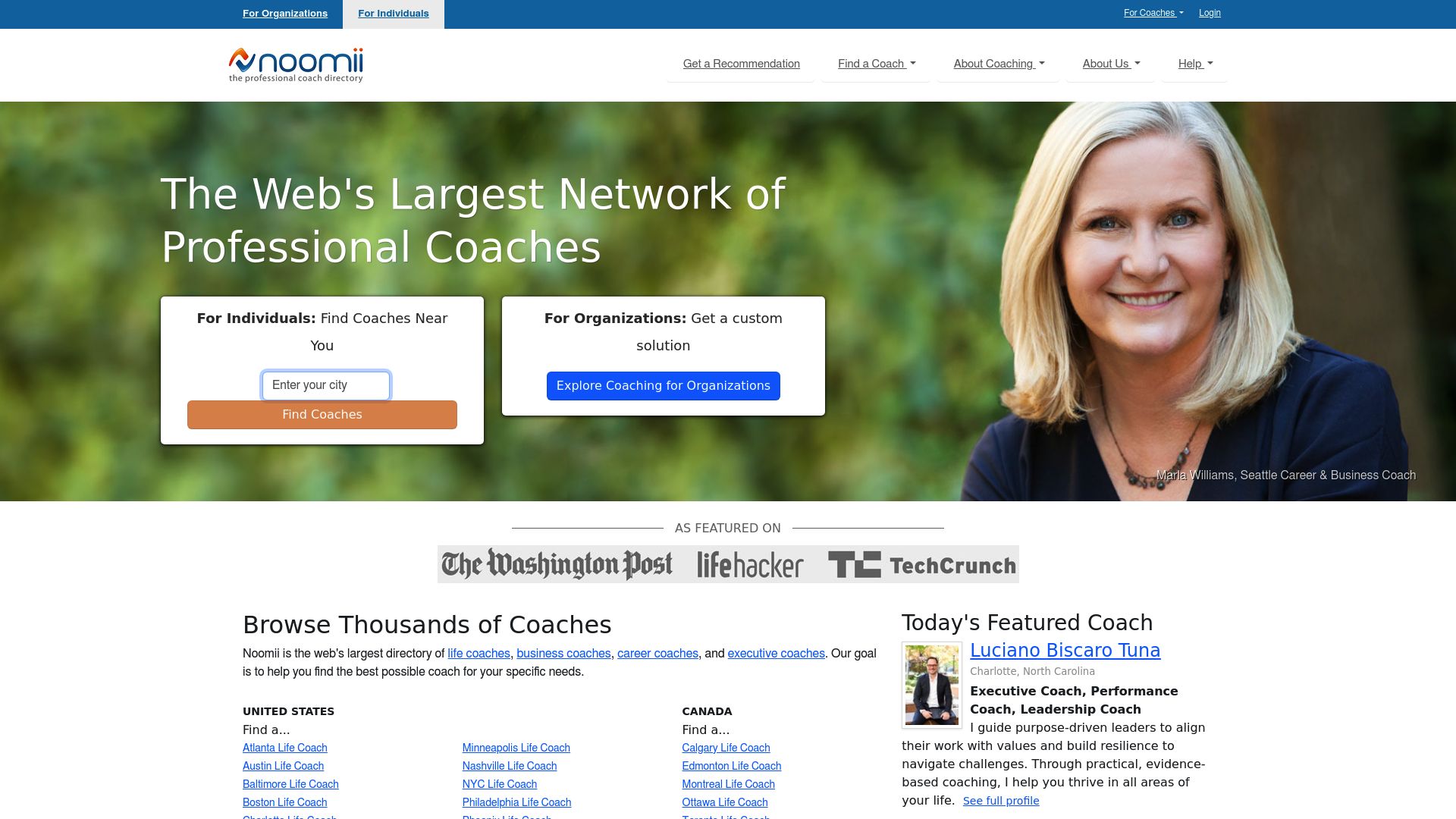
Whether you’re an individual or part of an organization, Noomii offers flexible options and a vast coach network. Their reputation for quality and educational resources make the search process less daunting.
For example, one executive used Noomii to quickly identify a coach with expertise in digital transformation, accelerating her development and impact. Using Noomii streamlines the search and increases the likelihood of a successful coaching partnership, helping you answer the question of executive coaching what is it in a practical way.
Step 4: Coaching Engagement and Action Planning
With your coach selected, the real work begins. Executive coaching what is it typically involves regular sessions—either virtually or in-person—focused on actionable steps and ongoing feedback.
Together, you’ll use assessments, feedback tools, and progress trackers to monitor development. Between meetings, action items help you apply new insights directly to your role. For example, an executive might implement a new decision-making framework, then reflect on results with their coach at the next session.
A typical coaching engagement includes:
- Bi-weekly or monthly sessions
- Use of personality or leadership assessments
- Goal tracking and accountability measures
This structure supports continuous learning and real-world impact.
Step 5: Measuring Progress and ROI
Measuring progress is essential to understanding executive coaching what is it and its value. Both you and your organization want to see tangible outcomes from your investment.
Progress is tracked using KPIs, self-reflection, and stakeholder feedback. Many companies report improved productivity, employee retention, and leadership effectiveness as a result of coaching. For instance, a team’s morale and output might soar after their leader works with a coach to enhance communication.
| Progress Tracking Tools | Description |
|---|---|
| KPIs | Quantitative business metrics |
| Self-reflection journals | Personal growth documentation |
| 360-degree feedback surveys | Stakeholder input |
| Regular check-in sessions | Ongoing evaluation and adjustment |
ROI case studies reveal that organizations often experience a return as high as 788% on coaching investments. This data underscores why executive coaching what is it is a strategic tool for leaders committed to measurable growth.
Key Benefits of Executive Coaching for Leaders and Organizations
Executive coaching what is it? At its core, it's a transformative partnership that unlocks both personal and organizational growth. The ripple effects of executive coaching extend far beyond the individual, shaping teams and entire companies.
Individual Leader Benefits
Executive coaching what is it offers leaders a unique path to self-discovery and professional growth. One of the most significant benefits is heightened self-awareness. Leaders learn to recognize their strengths, address blind spots, and develop confidence in their decision-making.
Emotional intelligence is another cornerstone of executive coaching what is it. Through guided reflection and feedback, leaders enhance their ability to understand and manage emotions—both their own and those of others. This skill is increasingly vital, as highlighted in Emotional intelligence in leadership, which explores why emotional intelligence will be a top trend in executive coaching for 2025.
Benefits include:
- Improved strategic thinking and adaptability
- Overcoming limiting beliefs and old habits
- Enhanced communication and influence
For example, a leader who struggled to connect with stakeholders might, through executive coaching what is it, transform relationships and boost team morale. Data shows coaching is linked to higher job satisfaction and accelerated career advancement, making it a strategic investment in personal leadership.
Organizational Benefits
The advantages of executive coaching what is it are not limited to individuals. Organizations see measurable gains in team performance, collaboration, and culture. When leaders evolve, their teams often follow suit, resulting in stronger engagement and retention.
Companies that invest in executive coaching what is it report:
- Higher employee engagement scores
- Increased retention of top talent
- Stronger leadership pipelines and succession planning
A compelling example is a company leveraging coaching to support digital transformation. By empowering leaders to navigate change, the organization fostered resilience and innovation across departments. According to a Metrix Global study, businesses realize a 788% ROI on executive coaching what is it, reflecting improvements in productivity and effectiveness.
Why Executive Coaching Works
What sets executive coaching what is it apart is its personalized, action-based approach. Unlike one-size-fits-all training, coaching tailors strategies to each leader's context, driving real behavior change.
Accountability is a major factor—leaders are encouraged and challenged to follow through on goals. Ongoing feedback ensures continuous improvement, turning insights into lasting impact.
Ultimately, executive coaching what is it serves as a catalyst for sustained leadership growth. It's not a quick fix, but a powerful process that equips leaders and organizations to thrive in 2025's complex business environment.
How to Choose the Right Executive Coach in 2025
Choosing the right executive coach can be the difference between transformative growth and missed opportunity. With executive coaching what is it becoming a more common question for leaders, understanding how to evaluate your options is crucial for a successful coaching relationship.
Credentials and Experience to Look For
When considering executive coaching what is it, start by evaluating a coach’s credentials and track record. The International Coaching Federation (ICF) certification is the gold standard, signaling a commitment to ethics and ongoing professional development.
Look for coaches with experience in your industry or a proven history of working with leaders at your level. Some organizations use resources like the Executive coach directory to compare credentials and specializations efficiently.
A coach’s background should align with your organization’s needs. For example, a manufacturing CEO may compare two coaches—one with deep operational experience, another with a broader leadership development focus—to find the best fit.
Assessing Coaching Style and Fit
Beyond credentials, the best executive coaching what is it outcome comes from a strong personal connection. Assessing a coach’s methodology is essential: do they use structured frameworks, or do they adapt fluidly to your learning style?
Trust and open communication are non-negotiable. Leaders often schedule trial sessions to sense rapport and gauge if the coach’s approach resonates. After a trial, one leader noted, “I felt truly listened to and challenged, which is exactly what I needed to grow.”
Consider reviewing resources like the Leader as a coach overview to understand various coaching approaches and decide which aligns best with your goals.
Questions to Ask When Interviewing Coaches
Interviewing potential coaches is a critical step in executive coaching what is it. Prepare thoughtful questions to ensure alignment and transparency:
| Question | Why It Matters |
|---|---|
| How do you handle confidentiality? | Builds trust and psychological safety. |
| What’s your process for setting and tracking goals? | Ensures accountability and measurable outcomes. |
| How do you measure progress? | Clarifies ROI and milestones. |
| Are you available for ongoing support? | Determines flexibility and support structure. |
These questions help uncover a coach’s process, philosophy, and ability to support your growth journey.
Red Flags and Common Pitfalls
Despite the appeal of executive coaching what is it, not every engagement delivers results. Beware of coaches lacking credentials, offering unclear processes, or promising overnight transformations.
Another pitfall is mistaking coaching for consulting or therapy. Coaching is future-focused and action-oriented; if a coach blurs these lines, expectations may be misaligned.
One company’s cautionary tale involved an unqualified coach who failed to deliver measurable progress, leading to wasted resources and frustration. Always verify credentials and clarity before committing.
Real-World Examples and Trends in Executive Coaching for 2025
Executive coaching what is it? The answer comes alive through real-world results and the latest trends shaping leadership in 2025. Let’s explore how executive coaching is making a difference for leaders and organizations—and how it’s evolving to meet new challenges.
Case Studies of Executive Coaching Impact
Executive coaching what is it in action? Consider these real-life transformations:
- A C-suite leader partnered with a coach to shift company culture. Through regular sessions, they overcame resistance, improved communication, and inspired their teams to embrace change.
- A mid-level manager facing a career plateau used executive coaching to develop strategic thinking. Within months, they secured a promotion and led a high-impact project.
- An executive team struggling with collaboration turned to team coaching. As trust grew, their decision-making processes became faster and more inclusive, boosting overall performance.
These examples reveal how executive coaching what is it can drive measurable results. Leaders gain clarity, teams align, and organizations thrive. The power lies in personalized guidance, accountability, and a future-focused approach.
Emerging Trends in Executive Coaching
As we look to 2025, the executive coaching what is it landscape is transforming. AI-powered coaching tools are becoming mainstream, offering data-driven insights and on-demand support. According to research on AI integration in executive coaching, generative AI is helping coaches personalize sessions and track progress with greater precision.
Business schools are also expanding coaching services, making development more accessible to emerging leaders. Coaching is increasingly focused on diversity, equity, and inclusion, ensuring all voices are heard. Hybrid and remote leadership challenges are front and center, with group coaching and digital platforms enabling scalable solutions.
These trends show that executive coaching what is it is not static—it adapts to new technologies and evolving workplace needs.
The Future of Executive Coaching
What does the future hold for executive coaching what is it? Expect a greater demand for measurable ROI and evidence-based outcomes. Organizations will integrate coaching into standard leadership development, making it a core part of succession planning and talent strategy.
Coaching will continue to blend technology with human insight, allowing for personalized, flexible, and impactful engagements. Leaders at all levels will have access to coaching resources, not just those in the C-suite. As the workplace grows more complex, executive coaching what is it stands out as an essential, evolving tool for navigating change and achieving success.
The journey ahead is clear: executive coaching empowers leaders to learn, adapt, and lead with confidence.
If you’re ready to put these executive coaching insights into practice and help more leaders reach their full potential in 2025, why not take the next step? As we’ve seen, visibility is everything—whether you’re an experienced coach or just starting out. By sharing your expertise where decision-makers are searching, you open the door to new opportunities and lasting impact. If you want to grow your coaching practice and connect with organizations seeking your skills, it’s easy to get started. Get Your Free Listing and join a trusted network of fellow professionals today.
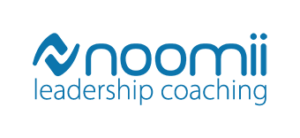
Leave a Reply
Want to join the discussion?Feel free to contribute!